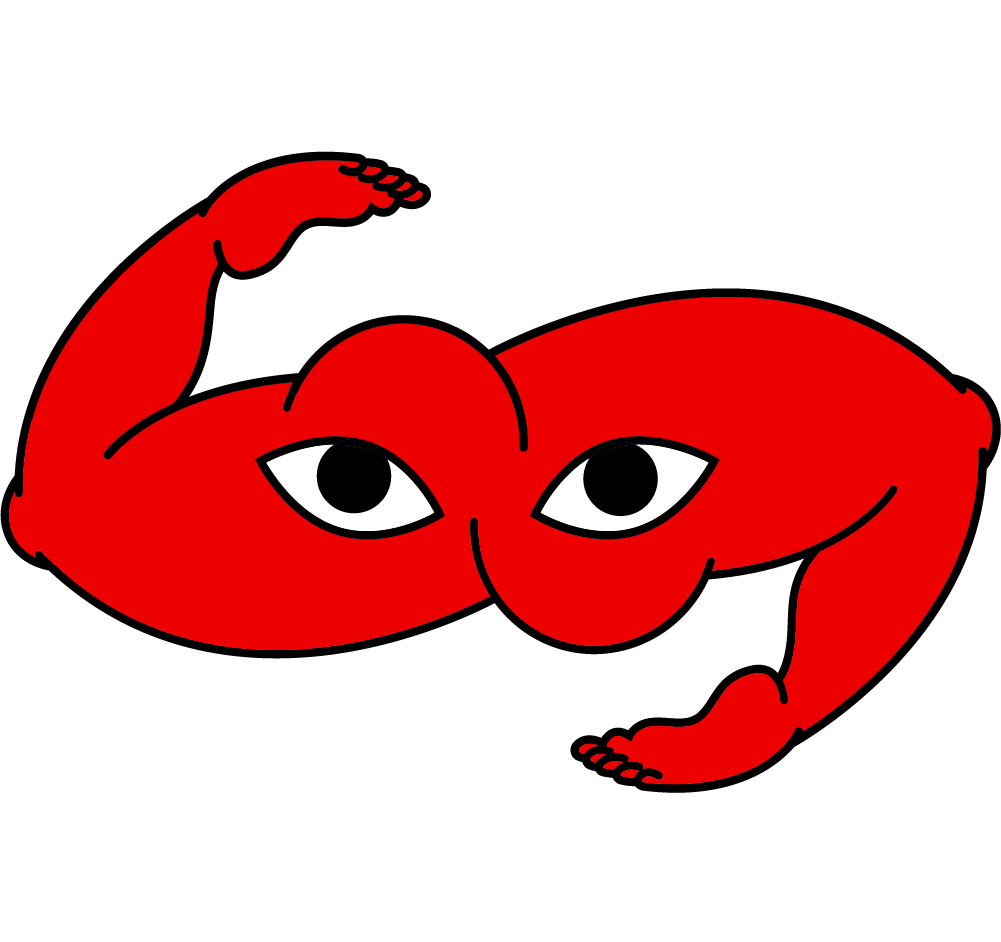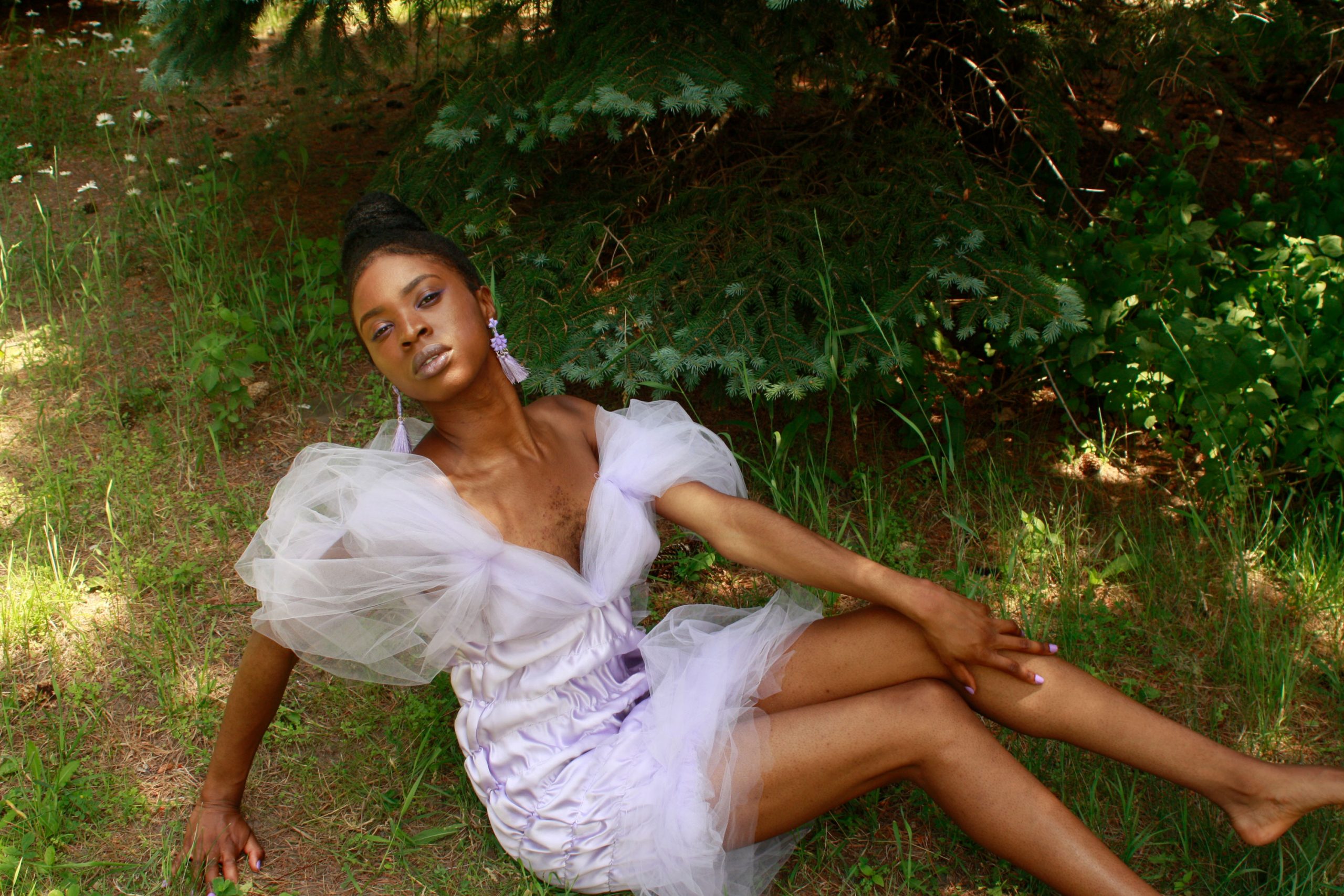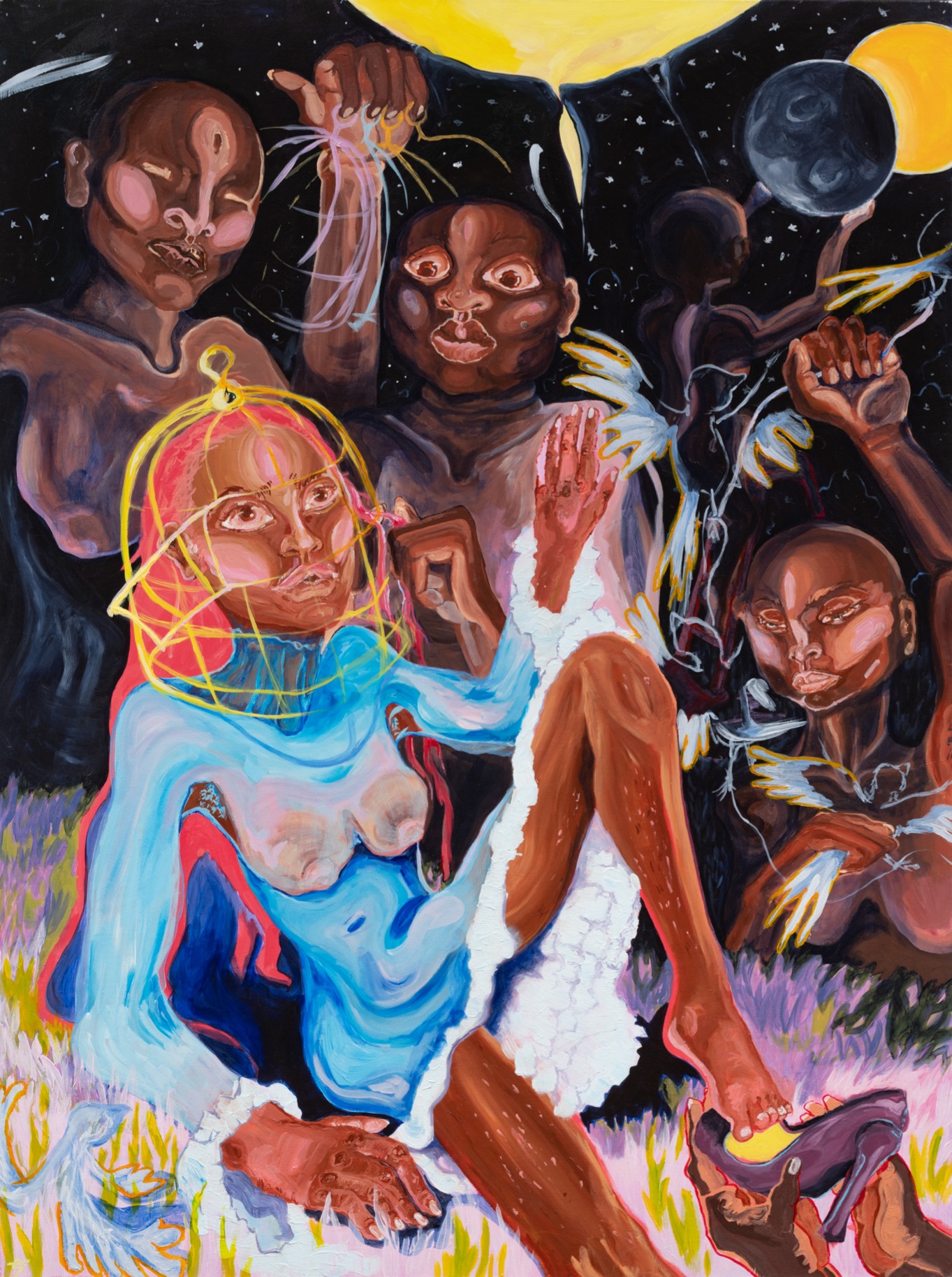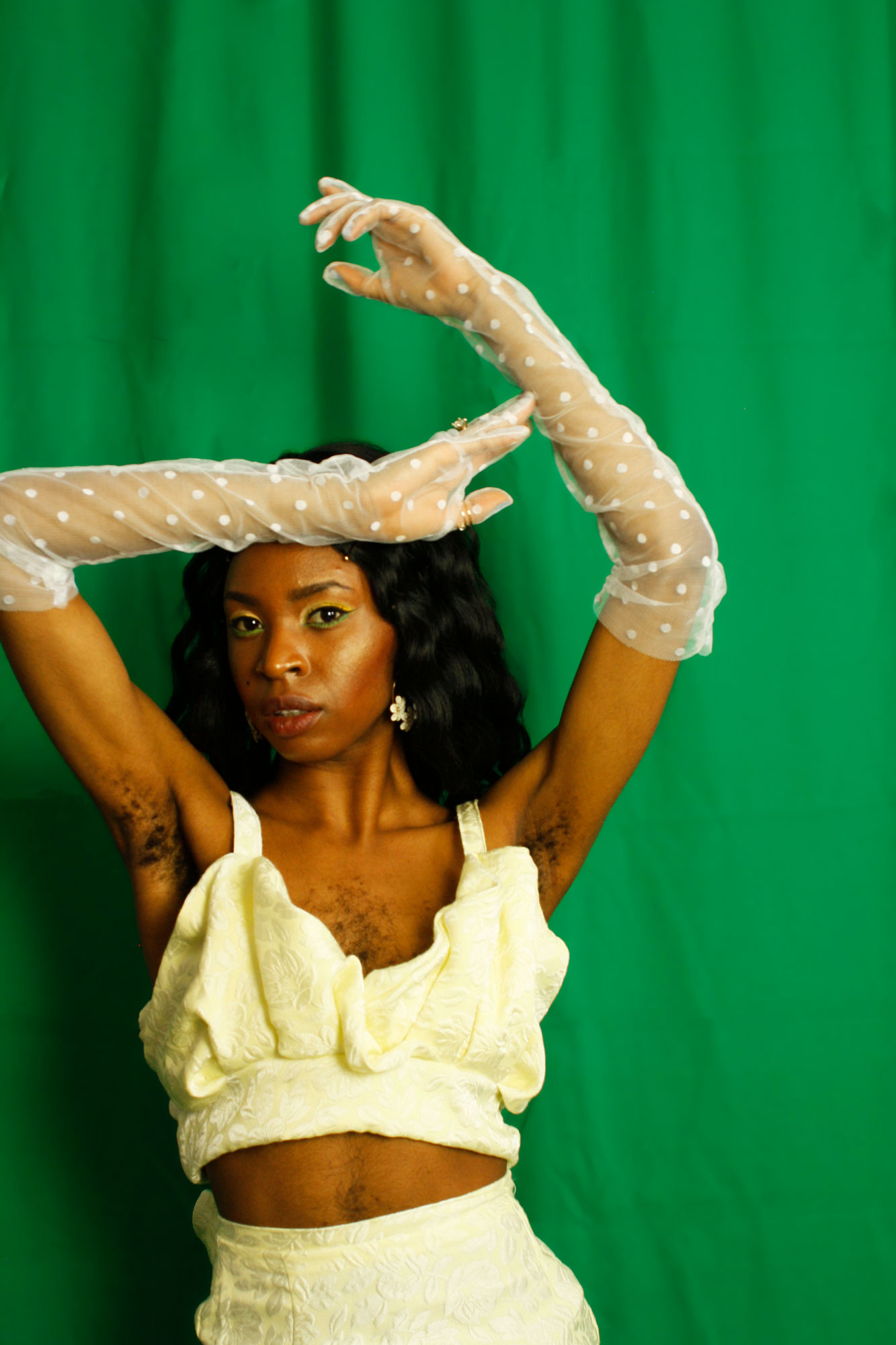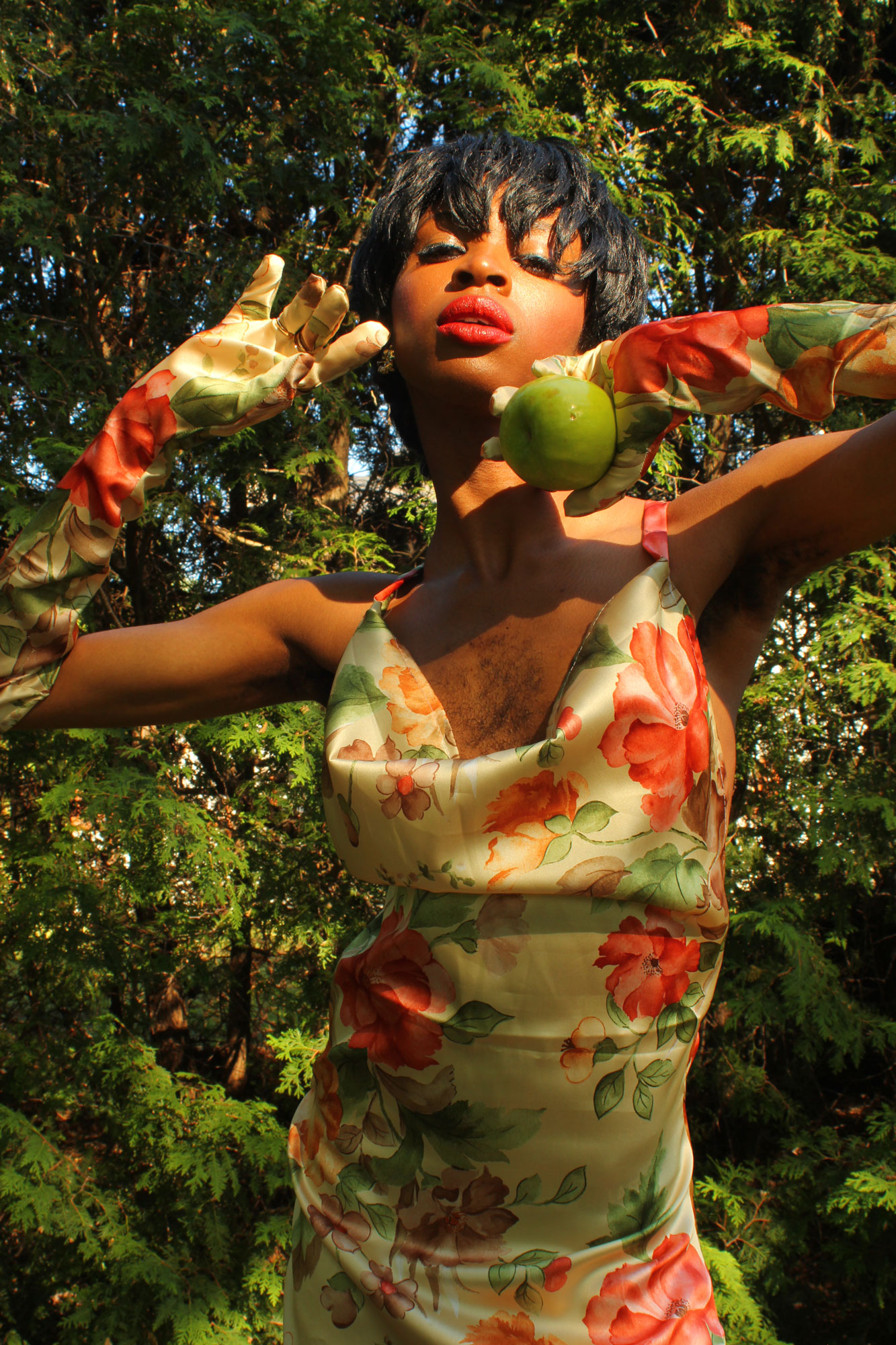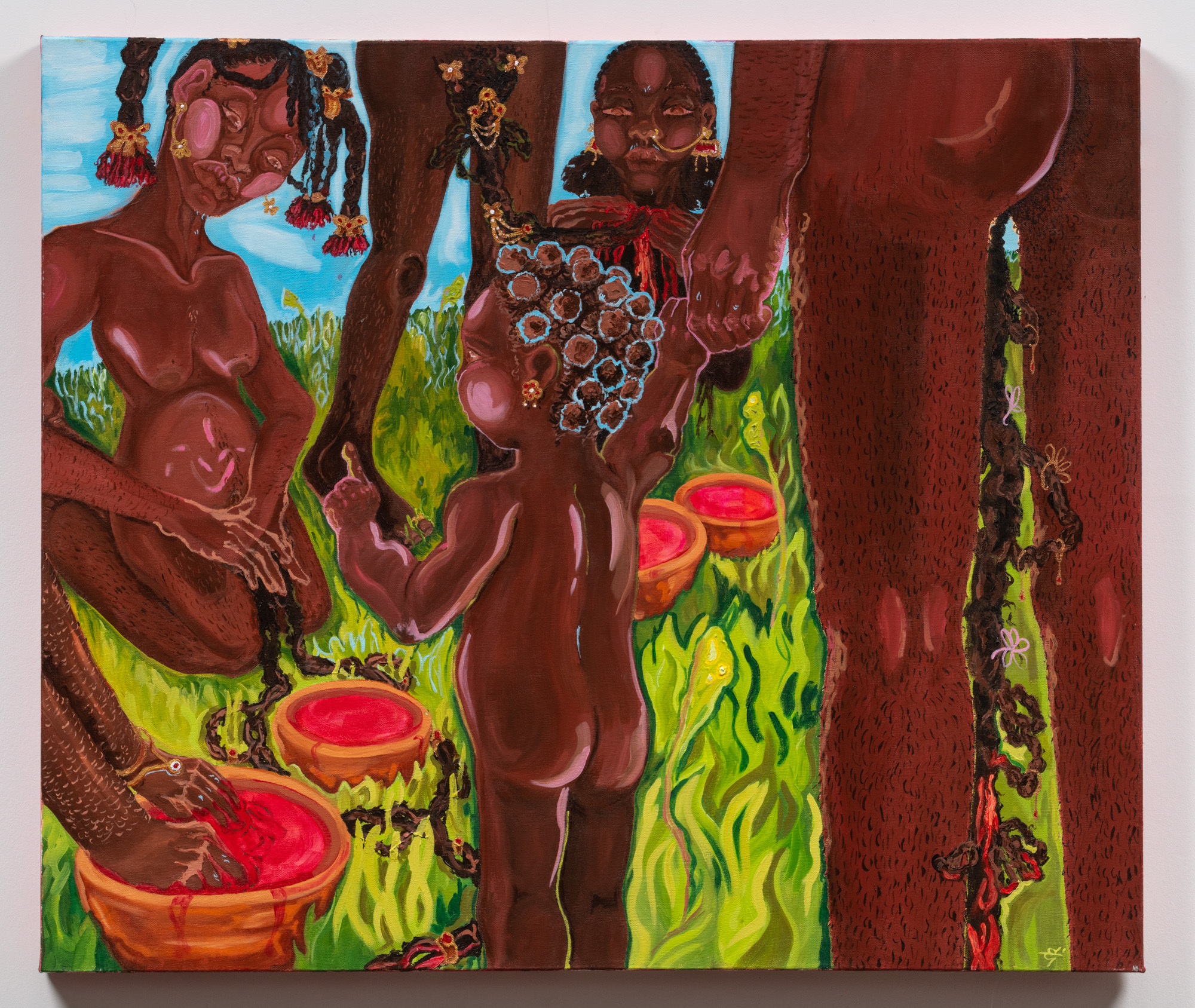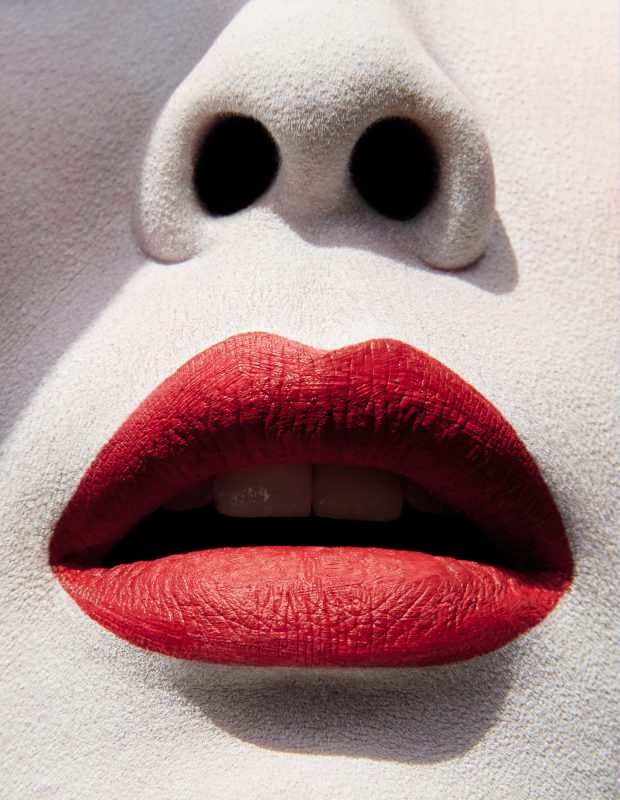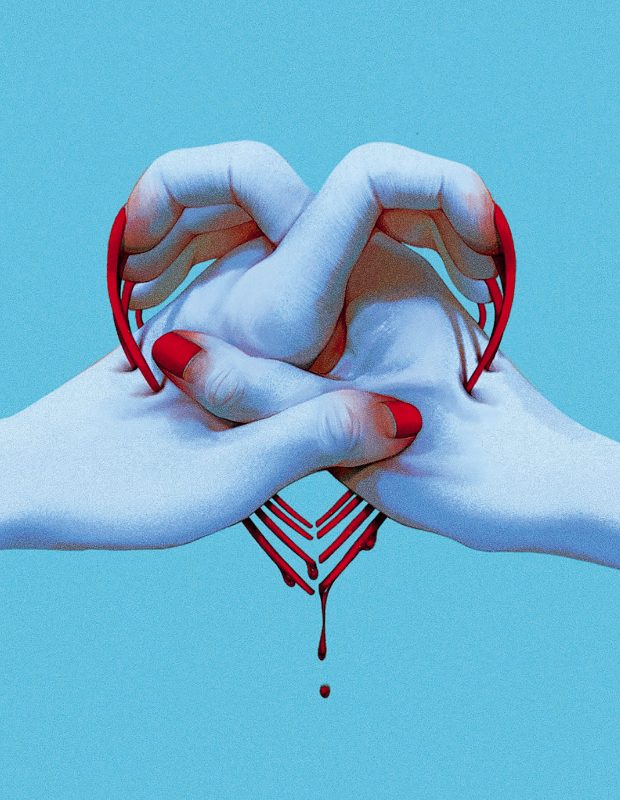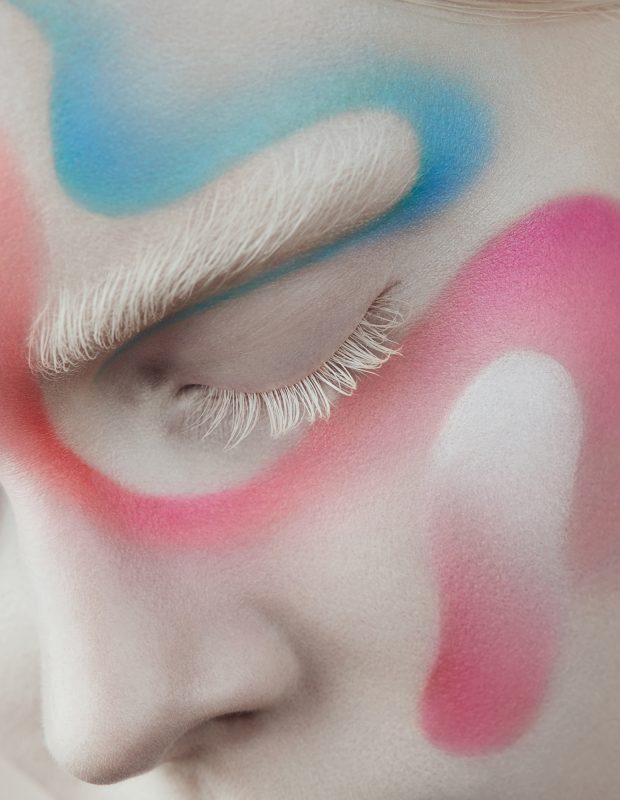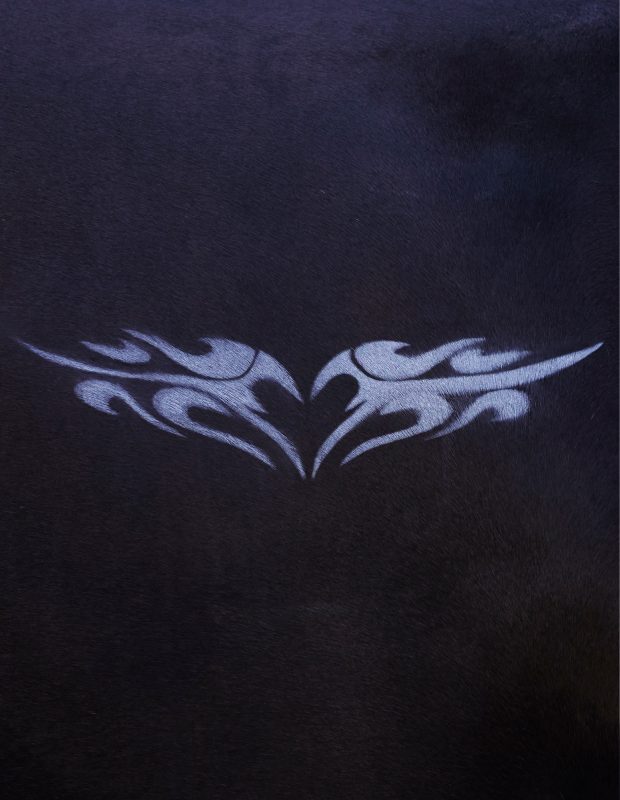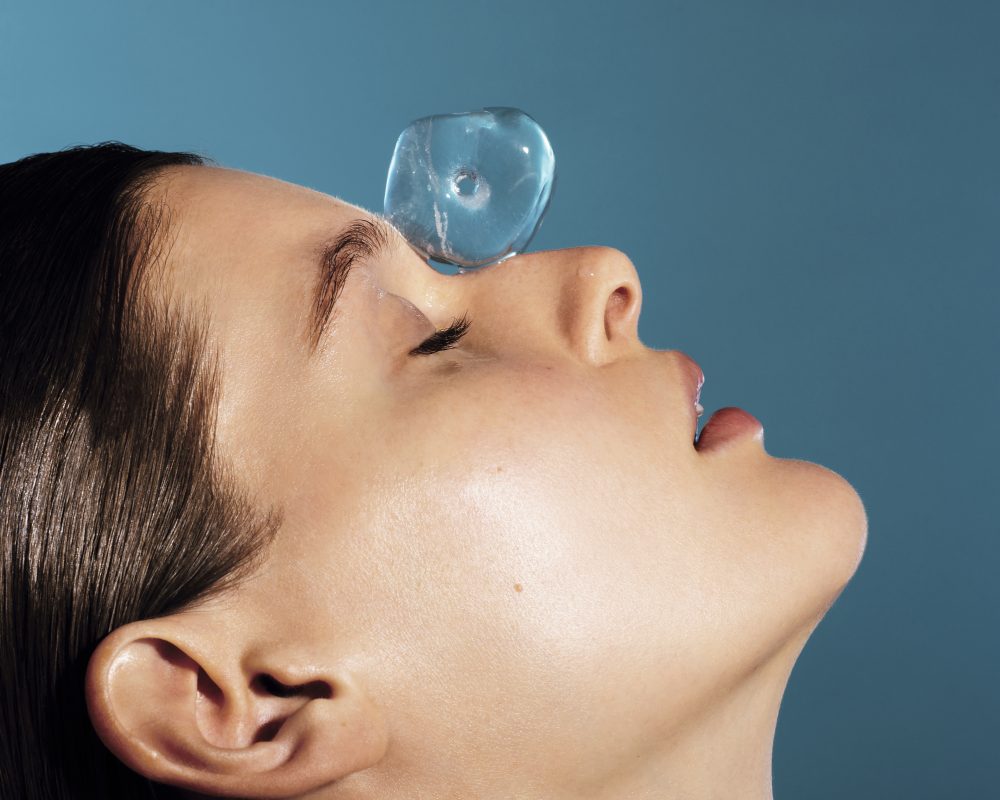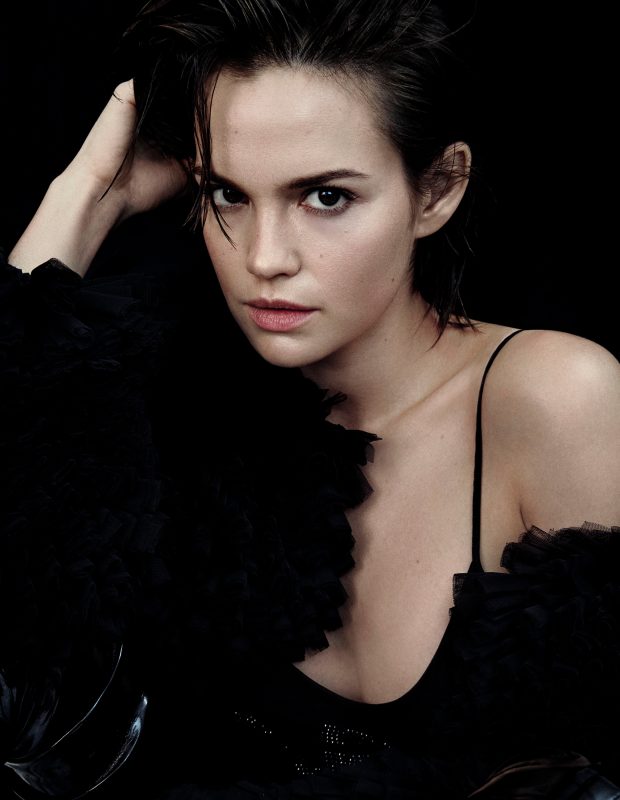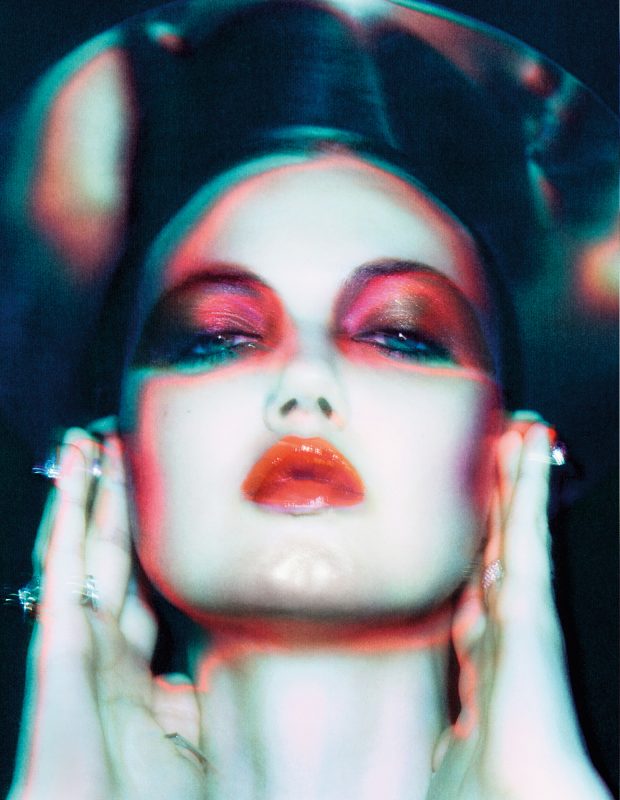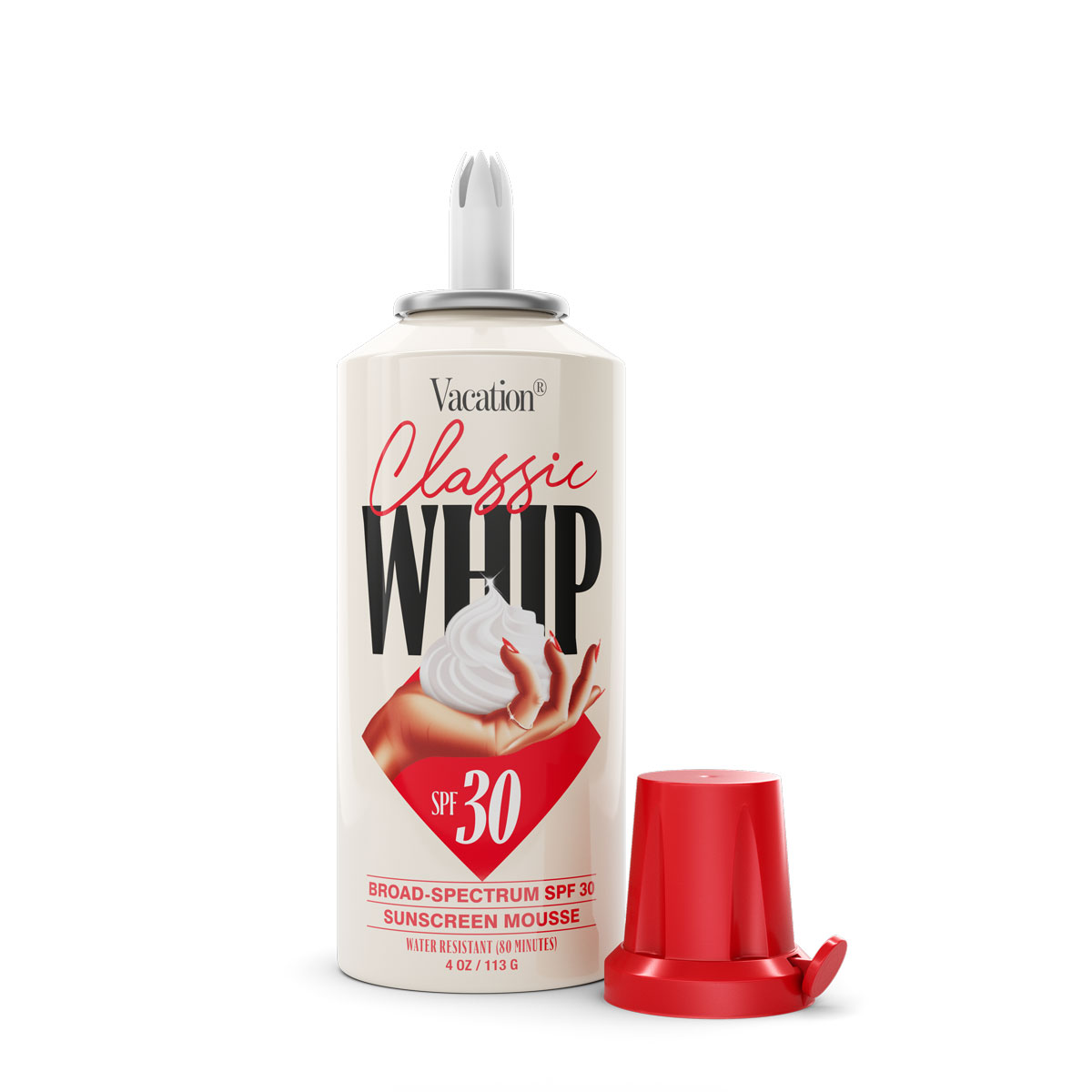Where do you find beauty and inspiration?
In nature – I think that’s where I really find my inspiration. I like to incorporate it in my work and compare it with the female body because I feel our body is like an environment of its own. But since my work and especially my paintings are mostly based on imagination, I just create things.
And what’s your purpose as an artist?
When I became a body hair activist in 2019, my purpose was to normalize female body hair through my work, while creating a form of escapism. I believe that painting and photography could also be seen as entering another world, where you can get lost in – where people can find a safe space. Maybe I started thinking of it that way because I was so introverted and insecure growing up. When I paint, it helps me verbalize what I am going through and find healing as well.
Let’s go back to the term “body hair activist”. That’s something unusual. How would you describe your journey to become a body hair activist?
When I was younger, I was always fighting with my own body. I was removing my body hair because that’s what I was taught to do. It is a painful memory. “Pretty hurts”, it’s what my family used to say, and I just hated that saying, because I don’t want to suffer just to be beautiful. When I was in college, I realized that I was depressed. When I got to university, I decided that I don’t want to do this forever. So I started to embrace my body hair and make it a mission to normalize this taboo – and that’s something that characterizes a body hair activist.
What changed your mind?
I was tired of being insecure and being in that dark place and I didn’t want to feel that way about myself forever. I started questioning myself, praying a lot as well – God, why did you make me like this? I used to dream that one day God would send me something such as a magical cream and put it all over my body and the hair would be gone – just like that. But that was just a dream so I started to work on my self-confidence and my relationship with my body hair. That’s when I realized that it doesn’t come from me – I didn’t actually hate my body hair or just woke up hating my body. I just hated being hairy because it’s viewed in a certain way, as something disgusting and not right on women. Sometimes, when I was seeing myself naked as a kid, I used to cry, because I was so hairy and didn’t know how to deal with it. Therefore, completely covering my body with clothes became something like a coping mechanism, where I could hide and forget about my body hair.
And that’s how you started the lavender project?
Yes, I wanted to talk about femininity and body hair and what does it mean to be feminine when naturally all women have body hair? Why is that not something people are talking about? After I started looking at myself and my body hair, I was trying to encourage myself by saying ‘that I am beautiful’. But just telling everyone that I had chest hair (after feeling comfortable with it), felt not appropriate – since only my close family members knew about my body issues. Implementing it in my art, seemed like the best way to address the topic. At that time I stopped removing my chest hair completely. I was working close to a fabric shop and every morning, when I was going to work, I was looking at the fabrics, and there was this purple colour, that caught my eye. I kept seeing it over and over again, and it feels like it was calling me, so one day I bought it and challenged myself: I practiced sewing and created this dress that has two sides – one that hides my chest and the other that reveals it.
That’s amazing. your dress reminds me of the saying, that there are always two sides to a story. With that in mind, do you think the problem with beauty standards such as those around body hair, is, that our environment is not used to it?
As black women when we are living in a white society or a society that has been colonized. It becomes a safe space to look like everyone else because you don’t want to be seen as someone different. You don’t want to be intimidated or not desired. There’s a lot of pressure to look a certain way. But I think now it’s changing, people are accepting their own body, which helps others to accept their own appearance.
And why did you choose social media as a platform?
Through social media, people could look at my project and have their reactions at home or wherever they are. Most people haven’t seen chest hair on a woman, because they have been taught to remove it. That’s why I wanted people to digest the project at home and not in front of me.
And after that, you became a body hair activist?
When I started, I didn’t know what a body activist was. “The Lavender project” itself wasn’t political for me – I did it for myself. Seeing the comments where people were sharing their experiences with their body hair was great – my project had really impacted them. A lot of them thought they were alone – like I did – and that they were the only women in the world having chest hair. My posts made them feel safe and healed a part of them, so they could feel comfortable in their own body. And that’s exactly what I wanted, right? Whereas the whole thing became bigger than me. Now I am creating stories, in my paintings, about female characters, that have body hair – they either love it and feel comfortable or they have personal struggles.
How can we spark the conversation and help people to see themselves and just be as they are, regardless of what everybody else might think or say?
I had to understand, that it is normal for everyone to feel that way. Our whole society feels uncomfortable with body hair on women because that’s what we’re taught and what we see on TV and in magazines. We pass those beliefs to our children and raise them like this. I think to be able to help society progress is really to have those conversations, but also to have people that look different on every media platform. For me, Instagram has been an incredible tool. Not only can we see different bodies and different people but learn about their different experiences.
And how can we have those conversations in real life? Sometimes it feels like internet activism isn’t resonating with the world we are living in.
We need to reinvent the system – by showing different types of people in media, so young people are not trained to feel uncomfortable in their skin and learn to hate their appearance. If more people choose to love themselves against whatever ideas society is propagating, then more people will feel seen, and others will accept those differences easier.
That means, gatekeepers need to create authentic diversity, where minorities are not only being represented but taking agency?
In the end, it is always about putting people in the spotlight, who influence the public – that’s what I’ve been observing. One person can influence others into accepting their appearance – as Ashley Graham did for example. I think to create a wave of body hair activists, we will have to start somewhere. It’s very, very slow and we’re not seeing enough of that representation, but right now, we are talking about it. But at some point, you have to see people going out unapologetically – and not only showing themselves on social media.
What are your experiences with going out?
When I go out, people stare at me. Are they thinking “Oh, my gosh, wow, she’s brave” or “Oh, that’s gross”? But by being outside, people get to reflect on that topic as well. And for me, it’s about making people think. So, they might say body hair is a preference, but how do they know? Having a preference is so much deeper than we think. I mean, where do we get those ideas? We don’t just wake up thinking something is pretty or not – it’s people telling us and putting ideas on a pedestal.
Nowadays people are very open about their private life, but body hair seems like something no one wants to tap into. Why do you think, body hair is such a taboo topic?
Because they associate it with grossness, being unhygienic, and the cliché of being primitive. They associate it with those attributes because advertisements for shaving and care products told us: you want to be feminine? You need hairless pits, legs, and everything. Those ideas are so ingrained, and people automatically believe them and do not ask about the why. Nowadays Razor brands try to make it look like a choice – but it’s just another way of capitalizing on those ideas. But in general, body hair is still a taboo and something that creates an image of how femininity and masculinity are supposed to be portrayed. When we see someone going against that, it can create anger or fear. I think that having body hair is like having your natural hair. Look how that has impacted the beauty industry when it comes to perms. It’s always about what is desirable. And that’s why we are mostly influenced by other people’s validation and perception of us.
What was the hardest thing you’ve learned through your journey?
The hardest thing that I learned from my journey is mostly how people look at you in real life. I assume people are just mean online, especially when they try to hide behind fake accounts. When I think about the outside world, I think about it like high school: There is always one bully, who just enjoys hurting other people. I try to remind myself, that those people exist, and they’ll never stop existing and sometimes they’re your own friends. For me being judged from the outside, while also knowing, that I fully accept myself is the hardest thing to work on. It makes you want to go back into hiding yourself – but you need to resist. Another hard part was that I always thought I was alone – I never really believed that but I had never seen anyone else with chest hair.
How do you take care of yourself in those moments, when it is too hard to go outside and deal with the world?
I live in Canada, so winter becomes a place where I can rest. We must cover up our entire bodies to be warm. It’s almost like hibernation for me. But even though it’s wintertime, I proudly show my chest hair, when I get invited to events. Besides that, painting is a way to heal as well, where I create this world that I want to be real. Where women are hairy and feel comfortable with themselves. That’s a part of my identity, so I like to create this world where that is seen as something beautiful.
Do you have a lot of conversations with the LGBTAI+ Community, because transitioning or generally exploring your gender and sexuality means as well thinking about the meaning of hair?
A lot of them follow and message me as well. They tell me their stories and how they feel. Especially trans women, feel like they must be hairless, since hair is a major factor that defines masculinity and femininity. But seeing my page helped them realize that body hair can also be feminine. When you are transitioning, obviously you are entering a world where there are certain ideas about being a woman.
It feels like there are a lot of different angles about it that influence each other.
Could breaking the concept of body hair be a joined force?
I’ve never been asked that, but I think it’s an interesting question. I’m not sure it can. Not at the moment. When I think of the body hair movement, it’s been negatively associated with feminism. We think of feminism as freedom, but then there are also the negative aspects like “the crazy feminist”-stereotype that is linked with having body hair. Right now, having body hair is heavily related to being political instead of just seen as something natural.
These days it’s very hard not to be political about things. Obviously, anything can be political for someone. Why have body hair and beauty standards always been political?
I think it’s always about stereotypes. Like those that we see in movies that make us believe that is a representative idea of how all feminists look like. So, we associate everything that she does with going against society and its norms. Generally, there are so many stereotypes that have a negative impact on positive movements. It is about breaking stereotypes within art and my paintings, so people feel seen and learn to appreciate their appearances.
Do you think if we all break free from certain ideas about beauty and collective validation, we could change the system?
It could happen. When I went to Haiti, I saw women not shaving their armpits and I was like, wait a minute, what’s that’s going on here? It wasn’t seen as something weird, just women with hair on their armpits. But when it comes to Europe and America, it’s like living in a bubble. Maybe we can create change in our bubble. There are a lot of things to deconstruct before we actually get where we want to be. So, I don’t know if we can affect the entire world in one shot.
Could telling people that they are beautiful help them to express themselves more honestly?
Eventually.
That means?
That’s a yes and no, because no matter how many people will tell you you’re beautiful doesn’t mean you believe it. It is a lot about personal work within yourself and deconstructing this idea from an individual perspective. People might have said to me that I am pretty, but in my head, I was not desirable.
So, you believe in the power of storytelling?
I think that’s what society is all about. If we want to create change, we must work within those rules. People need to fight for what they believe in, but also pick their battles. The more people talk, the more we realize that we are not that different from each other and that we are able to connect in very different ways. In the beginning, I thought, I could only normalize body hair through fashion and social media, but I realized that I could also do that within my art. Now I want to create paintings and bring them to galleries and museums, so people can have that discussion in those spaces as well. When you go to a museum, you see mostly white women who are hairless. It impacts you, to not see yourself. That’s what I am doing now: creating paintings where people can find themselves portrayed.
